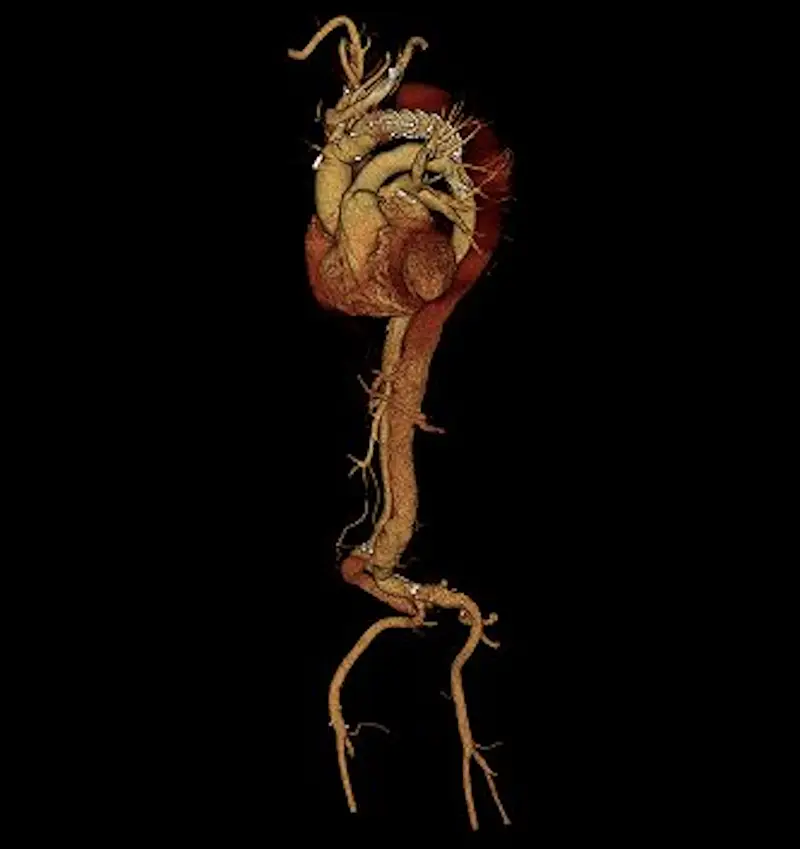For patients with aortic aneurysms and dissections, managing their disease is a lifelong journey that requires ongoing surveillance. According to Hiroo Takayama, MD, PhD, chief of adult cardiac surgery and co-director of the Aortic Center at NewYork-Presbyterian and Columbia, when one segment of the aorta is affected, the remainder of the aorta, including the aortic valve, may be at risk for disease development or progression. The American College of Cardiology, American Heart Association, and the European Society of Cardiology have established recommendations for routine surveillance imaging for aortic aneurysms and dissections, even after thoracic aortic surgery. However, adherence to these clinical guidelines has not been well studied.
To address the paucity of research in this area, Dr. Takayama, Annie Yu, ANP, and their Aortic Center team conducted a study evaluating the performance of their Aortic Surveillance Program and its impact on the management of aortic disease. Below, Dr. Takayama shares their research findings and discusses the importance of having a formalized structured imaging protocol for patients with aortic disease, even after a surgical repair.
An Aorta Surveillance Program
In 2017, we established a multidisciplinary Aortic Surveillance Program at NewYork-Presbyterian and Columbia. In close collaboration with our aortic surgeons and radiologists, this program is run by Annie Yu, an advanced nurse practitioner who specializes in aortic disease and coordinates care of patients seen at our Aortic Center. This program is one of the unique features of our Aortic Center, distinguishing us from others, and allows for structured management of our patients with periodic imaging through all phases of care with surveillance protocols. We recently welcomed a second nurse practitioner to our aortic team to meet increasing demand and to continue to enhance the patient experience at our center.

3D reconstructed image from a CT scan done for a patient who underwent repair of a type A aortic dissection
High-quality imaging is vital to establishing a plan of care, determining if and when a procedure is warranted, and to monitor patient progress post-surgery. Prior to the implementation of our surveillance program, decisions about imaging were not consistent – some patients underwent echocardiogram, others CT or MRI, and at various intervals. Therefore, our Aortic Center team has established a streamlined decision-making process on the modality and timing of imaging tailored to specific patient characteristics, disease presentation, individual risk factors, and latest research.
Study Methods
Megan Chung, MD, a cardiothoracic surgery resident at NewYork-Presbyterian and Columbia, and our research team hypothesized that structured follow-up imaging by our Aortic Surveillance Program at our Aortic Center would improve outcomes. For this study, we focused on patients who already had their aortic repair, although the majority of our patients at our surveillance program have yet to reach their surgical threshold. Patients included in our study were those who had open thoracic aortic surgery between January 2017 and July 2021 at NewYork-Presbyterian and Columbia. We compared those patients who received structured imaging with patients who did not. Imaging was reviewed for growth of the aortic segments outside of the surgical repair, pseudoaneurysm formation, and perigraft fluid collection.
Does Scheduled Imaging Improve Patient Outcomes?
Our study cohort of 559 patients included 214 patients with at least one structured follow-up imaging and 345 patients who did not have any structured follow-up imaging. In total, 502 scans were reviewed.
Our study demonstrated that our protocol for aortic surveillance after surgery led to increased rates of aortic reintervention and frequently identified significant radiologic findings in asymptomatic patients.
— Dr. Hiroo Takayama
Specifically, our findings showed:
- Cumulative incidence of follow-up was 38.6% at three years postoperatively.
- Of the 214 patients with structured imaging follow-up, 191 patients had at least 1 scan available for retrospective review, and of those, 109 patients had at least 2 scans, including baseline preoperative images, available for review for change in aortic size.
- Patients who had follow-up were more likely to have had their surgical repair for aortic dissection.
- At three years, cumulative incidence of pseudoaneurysm formation, significant perigraft fluid collection, and aortic growth > to 3 mm/year on routine imaging was 49.7%.
- These radiologic findings were common and increased throughout 5-year follow-up rather than plateauing in the early postoperative period.
- Patients with structured follow-up had a greater reintervention rate (26.0%) vs those who did not have structured follow-up (9.0%).
- At four years, survival rates were similarly excellent between the two groups (98.7% and 95.2%).
Future Implications
Our study demonstrated that our protocol for aortic surveillance after surgery led to increased rates of aortic reintervention and frequently identified significant radiologic findings in asymptomatic patients. However, even with our strenuous effort to encourage structured follow-up imaging with our dedicated program, clinical adherence was disappointingly low, indicating a discrepancy between the national and international guidelines and actual patient behavior. Our data showed that those who followed the protocol tended to undergo more re-interventions or re-operations due to disease progression which suggests the potential for survival benefit.The study also adds to the literature a unique dataset of radiologic findings on scheduled, asymptomatic imaging following aortic surgery.
Our aortic team is committed to transforming this current situation and improving patient outcomes by continuing to promote patient education, facilitating a streamlined process to obtaining imaging studies, and optimizing the clinic experience for each patient.




